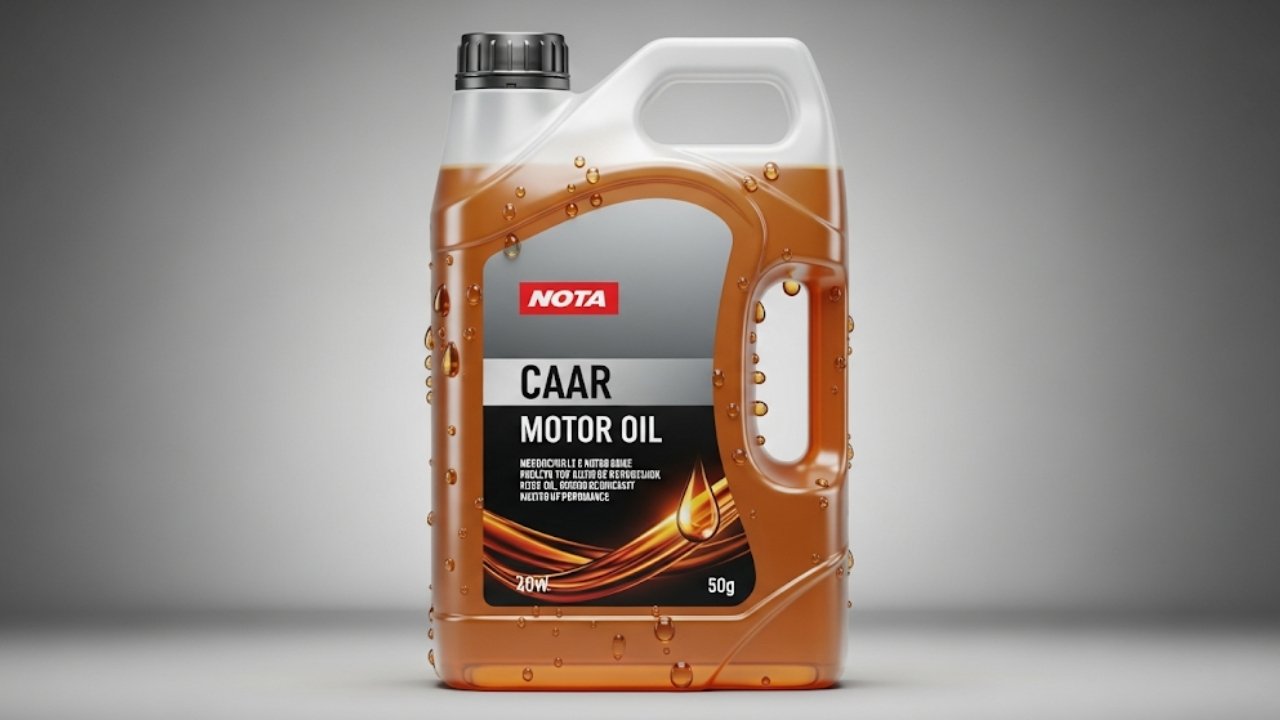What Kind of Oil Do I Buy for My Car?

Let me tell you a quick story. A few years back, I walked into an auto store thinking I was doing the most grown-up thing ever—buying oil for my car. I was confident. I had my car keys, my wallet, and a little swagger. But then I stood in front of that shelf of motor oils, and boom—panic. There were numbers like 5W-30, full synthetic vs. conventional, and a ton of unfamiliar brands. I froze.
If you’re like me, you’ve probably typed “what kind of oil do I buy for my car” into Google while standing next to your car with the hood open. Maybe you’ve even asked a friend, a mechanic, or someone at the gas station. Don’t worry—this article is exactly what I wish I had that day. It’s the friendly, no-jargon, super-clear guide you need to feel confident the next time you’re holding a bottle of engine oil.
We’ll break it all down—what oil does, what the labels mean, and how to know what’s best for your specific car. So, let’s roll up our sleeves and pop the hood together.
Why Oil Matters More Than You Think

Your car’s engine runs hot and fast. Oil works hard to keep it cool and running smoothly. But here’s the thing: not all oil is created equal. Just like we have different blood types, your car needs a specific type of oil that matches its engine’s design and age.
A few key roles engine oil plays:
Reduces wear on engine components.
Keeps engine clean by trapping dirt and particles.
Improves fuel efficiency.
Prevents overheating by transferring heat.
Protects against rust and corrosion.
If you’ve ever ignored an oil change or used the wrong oil, you might have noticed poor performance. Your engine might have felt sluggish, noisy, or even shaky. That’s your car saying, “Hey, help me out here!”
Decoding Oil Types: Synthetic vs. Conventional vs. Blend
One of the first decisions you’ll face when figuring out what kind of oil do I buy for my car is the type of oil. The options can be confusing, but don’t worry—I’ll explain it like I would to a friend over a cup of tea.
Types of Engine Oil: A Quick Overview
| Oil Type | Best For | Price | Longevity | Performance |
|---|---|---|---|---|
| Conventional | Older vehicles, simple engines | 3,000-5,000 miles | Decent | |
| Synthetic Blend | Daily drivers needing better protection | 5,000-7,000 miles | Better | |
| Full Synthetic | Newer cars, high-performance engines | 7,500-10,000+ miles | Excellent |
1. Conventional Oil
This is the standard stuff. It’s been used for decades and works fine for older cars that aren’t driven hard. If your car’s from the 90s or early 2000s and you mostly do city driving, this could be okay. But it doesn’t handle heat as well, and you’ll need to change it more often.
2. Synthetic Blend Oil
Think of this as a halfway point. It mixes synthetic and conventional oil, giving you some of the benefits of synthetic without the full cost. It’s great if you want to give your engine a little extra love without breaking the bank.
3. Full Synthetic Oil
This one’s the hero. It flows better at low temperatures, protects better at high temperatures, and keeps your engine cleaner for longer. It’s perfect for modern engines, turbocharged cars, or anyone who wants the best performance. Yes, it’s pricier—but in the long run, it often saves money by extending engine life.
Understanding Viscosity: What Does 5W-30 Even Mean?
This is the part that confused me the most at first. What the heck is 5W-30? It sounds like robot language. But it’s actually really simple once you break it down.
The first number (5W) stands for how the oil flows in cold weather. “W” means winter. The lower the number, the better the oil flows when it’s cold.
The second number (30) represents how the oil performs when the engine is hot. Higher numbers mean thicker oil at high temperatures.
Think of it like this: If your oil is too thick, it won’t flow easily and protect your engine. If it’s too thin, it might not protect parts under stress. That’s why using the recommended viscosity is so important.
Let’s say your car manual says 5W-30. That means the engine needs oil that flows easily at startup (5W) but still stays thick enough when it’s hot (30). Using 10W-40 instead might mess with that balance, especially in cold or hot weather.
Always match what’s in your owner’s manual. It’s not just a suggestion—it’s what the engine was designed for.
How to Find the Right Oil for Your Specific Car
Here’s the golden question: What kind of oil do I buy for my car? And the honest answer is—it depends on your car.
But here’s how you can figure it out easily:
Step-by-Step: How to Find the Right Oil
Check the owner’s manual: This is your car’s “birth certificate.” It will tell you the exact oil viscosity (like 5W-30) and sometimes even the brand recommendation.
Look at the oil cap: Some cars have the recommended oil printed right on the cap under the hood.
Use manufacturer websites: Toyota, Ford, Honda, and others often list oil specs online.
Ask a trusted mechanic: Especially if your car is older or modified.
Use online lookup tools: Many oil brands have tools where you input your car’s make, model, and year.
Even if you’ve lost your manual (been there!), you can find digital copies online. Never guess. A wrong oil can affect your engine’s lifespan.
The Role of Driving Conditions and Climate
Let’s say you and I have the same car, but I live in a hot, dusty city and you live in a chilly, quiet town. We might need different oils, even with the same model.
Why? Because driving conditions and climate matter.
Cold weather: Choose oils with lower “W” numbers like 0W or 5W. They flow faster during cold starts.
Hot weather: You might want slightly thicker oil (like 10W-40) to avoid breakdown at high temperatures.
Stop-and-go traffic: Go for high-quality synthetic oil. Your engine heats up fast and needs consistent protection.
Towing or mountain driving: Use synthetic or higher-viscosity oil. Your engine works harder and needs better lubrication.
Matching your oil to your environment is like wearing the right shoes for the weather. Flip-flops in snow? Bad idea. Wrong oil in your engine? Same story.
Signs You Might Be Using the Wrong Oil
So, what happens if you accidentally pick the wrong oil? Trust me, your car will let you know—it just won’t send a text about it.
Here are a few warning signs to watch for:
Louder engine noise: If your car sounds like it’s coughing or knocking when you start it, the oil might not be doing its job.
Reduced fuel economy: Suddenly spending more on gas? Thicker or thinner oil than needed can increase engine resistance.
Oil leaks: Some oils might not seal as well, especially in older engines.
Burning smell: Oil that’s too thin can burn off fast, especially in hot weather.
Dashboard warning lights: Your oil pressure light might come on if oil isn’t flowing right.
I once used 10W-40 in my car instead of 5W-30. I thought I was saving money. A week later, my engine made a strange rattling noise. Lesson learned—the wrong oil affects performance and can shorten your engine’s life.
How Often Should You Change Oil?
This is the other big question I hear all the time. And honestly, the answer has changed a lot over the years.
Back in the day, the rule was “every 3,000 miles or 3 months.” But with modern synthetic oils and better engines, that’s often outdated.
Here’s a quick guide:
| Oil Type | Typical Oil Change Interval |
|---|---|
| Conventional | 3,000 – 5,000 miles |
| Synthetic Blend | 5,000 – 7,500 miles |
| Full Synthetic | 7,500 – 10,000+ miles |
Your best bet? Follow the schedule in your owner’s manual, or check the dashboard service reminder. Some cars even tell you exactly when the oil needs changing.
Also, consider your driving style:
If you drive short trips often, you may need oil changes sooner.
Long highway drives are easier on the engine.
Extreme heat or cold can also shorten oil life.
Changing your oil regularly with the right type keeps your engine clean, quiet, and healthy. It’s like brushing your car’s teeth.
Reading the Label: What All Those Symbols and Codes Mean
Ever flipped a bottle of motor oil and seen a bunch of strange letters like API SN, ILSAC GF-6, or Dexos? You’re not alone.
These labels show that the oil meets industry standards for safety and performance. Here’s a cheat sheet:
API (American Petroleum Institute): Look for “API SN” or “SP.” Newer letters mean newer, better standards.
ILSAC: This is about fuel economy and emission control. If you see GF-6, that’s great for newer engines.
Dexos: If you drive a GM vehicle, you’ll want oil with a Dexos certification.
Also look for:
“For gasoline engines” vs. “For diesel engines”—don’t mix these up!
High-mileage oil—great for cars with over 75,000 miles.
Energy conserving—helps improve fuel economy.
So next time you’re in the oil aisle, you’ll know what to look for—and feel like a pro.
Best Engine Oil Brands (That Mechanics Actually Recommend)
There’s no “one-size-fits-all” answer, but there are some trusted brands that consistently perform well across different car types.
Here are a few mechanics’ favorites:
Mobil 1: A premium full synthetic oil. Great for new engines, turbos, and cold starts.
Castrol EDGE: High performance, good for both city and long-distance drivers.
Valvoline: Reliable and often more affordable. Available in many types, including high-mileage blends.
Pennzoil: Known for engine cleanliness. Also offers eco-friendly options.
Shell Rotella: Excellent for diesel engines and trucks.
All these brands offer oils in various viscosities, blends, and certifications. The key is to pick the right spec for your engine, not just the most expensive bottle.
Eco-Friendly Oil Tips: How to Protect the Planet Too
Car care and eco-consciousness can go hand-in-hand. If you’re someone who cares about the planet (like me), there are a few small steps you can take when thinking about what kind of oil do I buy for my car:
Use extended-life full synthetic oil: Fewer oil changes mean less waste.
Recycle used oil: Many auto parts stores accept it for free.
Choose API-certified “Resource Conserving” oils: Better for fuel economy and the environment.
Don’t overfill or underfill: Follow the dipstick and manual exactly.
Even your oil choice can be a small act of care—for your car and the earth.
FAQs: What People Like You Are Asking
1. What kind of oil do I buy for my car if I lost the manual?
No problem. You can check the oil cap, search your car’s make and model online, or ask a local mechanic. Most oil brand websites also let you look it up with a few clicks.
2. Is synthetic oil really better than conventional?
In most cases, yes. Synthetic oil offers better protection, longer life, and improved performance—especially in modern engines.
3. Can I mix different types of engine oil?
You can in a pinch, like topping up when low. But don’t make it a habit. Stick to one oil type to avoid performance issues.
4. Is high-mileage oil worth it?
Yes—if your car has over 75,000 miles. It has additives that protect worn engine parts and reduce leaks.
5. Can I use diesel engine oil in my gas engine car?
No. Diesel oils are formulated differently and may damage gas engines.
6. What happens if I put too much oil in my car?
Overfilling can cause foaming, reduced lubrication, and engine damage. Check the dipstick after each change.
7. How do I know when it’s time for an oil change?
Look for warning lights, dirty or dark oil on the dipstick, or follow the manual’s interval.
8. Should I change the oil filter too?
Yes. Always change the filter when changing the oil. A clean filter ensures clean oil flow.
Final Thoughts: Be Kind to Your Car, and It’ll Be Kind to You
Choosing the right oil doesn’t have to be overwhelming. When you find yourself asking “what kind of oil do I buy for my car,” remember—this is more than just a fluid. It’s your engine’s lifeline. It keeps everything running smoothly, quietly, and efficiently.
Think of it like choosing the right food for your body. The better the quality, the better you’ll perform. Your car feels the same way.
Here’s your go-to checklist:
Check your owner’s manual.
Know your climate and driving habits.
Choose between synthetic, blend, or conventional.
Stick with the right viscosity (like 5W-30).
Don’t forget the filter.
In the end, your car doesn’t need the most expensive oil—it needs the right one. And now, you know how to find it.
Next time someone asks, “what kind of oil do I buy for my car?”—you’ll smile and say, “Let me walk you through it.”





